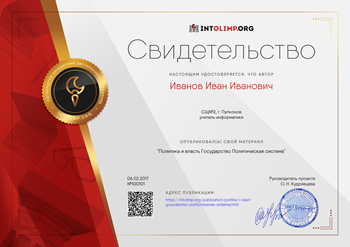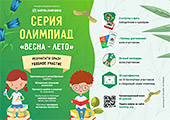SHORT TERM PLAN
| School | № 18, Nur-Sultan | |||
|
| Teacher’ s name: Nurseiit Ainur Zhumakhmetkizi | |||
| Grade 3 | Present: Absent: | |||
| Module 3. Time |
| |||
| Theme: | Times of my day | |||
| Learning objectives(s) that this lesson is contributing to | 3.1.7.1 use contextual clues to predict content in short, supported talk on a limited range of general and some curricular topics; 3.5.2.1 use cardinal numbers 1 -100 to count and ordinal numbers 1 – 10; 3.5.9.1 to talk about daily routine and to talk about location | |||
| Lesson objectives | By the end of the lesson: All learners use daily routine verbs with some error Write the time using prepositions with considerable support Write the time using numbers with considerable support Recognise the question When do you …? Most learners will be able to: Use daily routine verbs Write the time using prepositions with limited support Write the time using numbers with limited support Say the question When do you …? with support Some of the learners will be able to: Use daily routine verbs correctly Write the time using prepositions correctly Write the time using numbers correctly Independently use questions When do you …? What time do you..? What do you do on….?
| |||
| Assessment criteria | Learners have met the learning objective (3.1.7.1 / 3.5. 2.1./3.5.9.1.) if they can: Use the time using cardinal and ordinal numbers Understand a.m. and p.m. | |||
| ICT skills | Application and higher-order thinking skills | |||
| Value links | Education throughout life, cooperation | |||
| Cross curricular links
| Cross-curricular integration takes place in a lesson through Math. | |||
| Previous learning | Storytime | |||
|
| ||||
| Time | Planned activities | Resources | ||
| 3 minutes 3 minutes
| Greeting & Objectives Lesson objectives learning objectives will be introduced. Warm up. Activity 1 “Gulnara’s day life”: There are pictures and slides. Look at Gulnara’s daily routine and number (learners match daily routine and numbers ) Activity 2. Cardinal numbers: Children lets count from 1 to 10. And now, boys and girls, we will learn ordinal numbers. Ordinal numbers are used to indicate position, rank and dates. (Порядковые числительные используются для обозначения позиции чего-либо (кого-либо), ранга, а также для обозначения дат). To form ordinal numbers it is necessary to add suffix – th at the of the word. (Чтобы образовать порядковое числительное, необходимо в конце слова (числа) прибавить суффикс "-th". Example: four – fourth (четыре – четвёртый) Count from 10 to 100: Children will count with teacher Activity 3. “Yes or no”. [G] Look, read and say yes or no. 1 The first and the ninth clocks are blue 2 The fifth and the tenth clocks are yellow 3 The second and the sixth clocks are green 4 The seventh and the eights clocks are blue 5 The third and the forth clocks are orange
Activity 4. “Start thinking”. [G] Think and answer. Where is a schoolbag? Where is a dress? Where is a chair? Where is a bear?
Answer: Formative Assessment: Peer Assessment: students find out things and say where are they.
| Interactive board Presentation slide 3 Presentation slide 4
Presentation slide 5 Presentation slide 6 Presentation slide 7 | ||
| 3 minutes 5 minutes 6 minutes 8 minutes
| Activity 4. “Method Jigsaw” [I] Read the new words individually. Deduce the meaning of new words. Slide on new words The purpose of this task is learners will read the words and try to translate the words looking on pictures. eight o’clock – восемь часов breakfast - завтрак lunch - обед dinner - ужин get up - просыпаться have a shower – принимать душ Brush my teeth – чистить зубы do my homework – выполнять домашнее задание
Activity 5. “When do you …?”. Children answer the questions: When do you get up? I get up at seven o’clock When do you have your breakfast? I have my breakfast at eight o'clock When do you have lunch? I have lunch at one o'clock SA: Students compare their answers with the answer key shown on the board .
“What time is it?”. [G] Teacher explains how to say the time. Activity – 6 “Guess the time” Children need guess the right variant. And then say the time.
Formative Assessment: Self-Assessment: Teacher displays the answer key on the board, students check and correct. Feedback: Teacher speaks positive sides and explains the mistakes. | Presentation slide 8 Presentation slide 9 Presentation slide 9 Presentation slide 10
| ||
|
|
|
| ||
| Differentiation | Assessment | Health and safety | ||
| Activities – 5, 6 Consider all facts shows where learners are. The learner, who doesn’t know the meaning of the words, needs the help of peer. Most learners answer the question, can match and complete. All the learners can answer the questions but only some students can ask the questions express own thoughts/ideas by giving reasons for them. To weak learners based on their ability will be given individual support. Differentiation by task: The learners were given different activities: few types of questions, matching Differentiation by support: to facilitate learner’s success teacher provides examples of considering facts, questions, problems | Learners learning will be checked by different tasks: explain, match, complete, paraphrase the words. FA: PA: students share ideas In “Matching” task, also learners learning will be checked individually. Correct the false heading. FA: SA: students compare their answers with the answer key shown on the board
| Give everyone an opportunity to speak. Respect others and their thoughts. Use soft voice while speaking. Everyone follows the direction | ||
|
|
| |||
Пояснение к плану урока 3 класса учебника Smiles, модуль 2 Время
Цель и задачи урока: понимать и извлекать конкретную информацию по учебной теме. Уметь использовать расширяющийся словарный запас, соответствующий теме и жанру. Знать как образуются количественные числительные и порядковые числительные. Говорить о повседневной жизни и и местоположении.
Ожидаемые результаты
Большинство учащихся умеют писать время используя числительные и предлоги. Могут ответить на вопрос «Когда ты …?».
Все учащиеся могут отвечать на вопросы, но только некоторые учащиеся могут задавать вопросы, выражая собственные мысли / идеи, объясняя их.
Слабым учащимся в зависимости от их способностей будет оказана индивидуальная поддержка.
Ход урока состоит из активных форм обучения, в ходе которых предполагается, что учащиеся будут самостоятельно развивать функциональную грамотность, активно «добывать» знания, с огромным желанием развивать коммуникативные навыки общения со сверстниками, и творчески подходить к решению проблем.
Методы и приемы интерактивного обучения на уроке.
«Мозговой штурм»
«Игры»
«Да или нет»
«Дифференциация по трудности заданий»
«Вопрос - ответ»
Учащимся были предложены разные задания.
Дифференциация по поддержке:
Чтобы способствовать успеху учащегося, учитель приводит примеры рассмотрения фактов, вопросов и проблем.
Учащиеся в группе определяют проблемы, причины и решения. Ученики обмениваются идеями, учитель при необходимости корректирует учащихся.
В задании «Да или нет» обучение учащихся также будет проверяться индивидуально.
В задании «Вопрос - ответ», ученики сравнивают свои ответы с ключевым ответом, указанным на доске.
Учащийся, не знающий значения слов, нуждается в помощи сверстников.
Критериальное оценивание: FA: PA: студенты делятся идеями и комментируют ответы друг друга. Учащиеся будут оценены посредством различных заданий таких как: объяснять, сопоставлять, дополнять.
Взаимооцениванипе и самооценивание:
Ожидаемые результаты учебы должны быть полностью понятны ученикам. Через это ученики, определив, что достигли части или всех критериев оценки, могут обозначить, что надо улучшить. Обучение учащихся будет проверяться с помощью разных заданий: объяснять, сопоставлять, дополнять.
|
|
|










